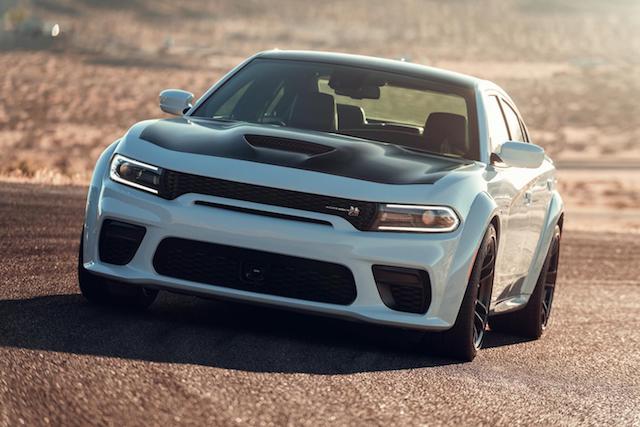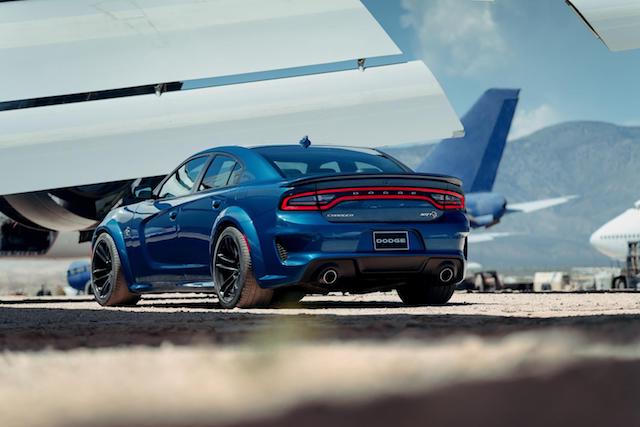JULY 3, 2019
 Monday, July 1, 2019 at 08:55AM
Monday, July 1, 2019 at 08:55AM 

Volkswagen Group of America has announced a new name and expanded role for the former Electronics Research Laboratory (ERL), and unveiled a unique vehicle concept that combines Volkswagen heritage with futuristic technology. The new Innovation and Engineering Center California (IECC) will be the largest Volkswagen vehicle research facility outside Germany, and "serve as the heart of an expansion of Volkswagen’s North American engineering resources, driving greater innovation in vehicle technologies closer to the U.S. customer," according to VW PR minions. The former ERL served as the Volkswagen Group’s research and innovation hub in Silicon Valley for more than 20 years. It grew from just three employees when it was founded in 1998, to more than 180 engineers, social scientists, researchers and product designers. The IECC will be comprised of two entities: the Innovation Center California (ICC) and the Engineering Center California (ECC). The ICC is one of three global Group Innovation centers that will be tasked with key “lighthouse projects” and focus on bilateral research and pre-development projects for VW Group brands. The ECC will focus on connected car, intelligent cockpit, and autonomous driving and parking development projects in the North American region. To celebrate 20-plus years of innovation, the IECC unveiled the Type 20 concept. Built from a 1962 Type 2 11-window Microbus, the Type 20 has been converted to electric power and showcases a variety of experimental elements, both tactile objects and interactive electronics.
 Powertrain and Chassis: The Type 20 features a full BEV drivetrain, including a 10 kWh battery, 2,500-Watt onboard charger, and an electric motor that produces 120 horsepower and 173 pound-feet of torque. It also features a custom-designed active pneumatic suspension developed with Porsche that adjusts the vehicle’s ride height via software. This allows the Type 20 to actually rise as the driver approaches.
Powertrain and Chassis: The Type 20 features a full BEV drivetrain, including a 10 kWh battery, 2,500-Watt onboard charger, and an electric motor that produces 120 horsepower and 173 pound-feet of torque. It also features a custom-designed active pneumatic suspension developed with Porsche that adjusts the vehicle’s ride height via software. This allows the Type 20 to actually rise as the driver approaches. Biometric Identification: Experimenting with biometric vehicle access, the Type 20 includes a real-time facial recognition system integrated with the digital assistant to enroll and identify users. The system leverages a 720p wide-angle camera integrated into the driver’s-side second window. The recognition is done via the Sensory SDK, running in real-time on an Nvidia Jetson TX2 prototyping package.
Biometric Identification: Experimenting with biometric vehicle access, the Type 20 includes a real-time facial recognition system integrated with the digital assistant to enroll and identify users. The system leverages a 720p wide-angle camera integrated into the driver’s-side second window. The recognition is done via the Sensory SDK, running in real-time on an Nvidia Jetson TX2 prototyping package. Conversational Digital Assistant: The Type 20 integrates directional microphones into three zones of the vehicle—the front exterior, driver cockpit and rear passenger zone. An intelligent speech agent builds on the existing speech capabilities of the Group and can receive more natural language commands. The system provides LED feedback to exterior commands via the headlights and iconic Volkswagen logo.
Conversational Digital Assistant: The Type 20 integrates directional microphones into three zones of the vehicle—the front exterior, driver cockpit and rear passenger zone. An intelligent speech agent builds on the existing speech capabilities of the Group and can receive more natural language commands. The system provides LED feedback to exterior commands via the headlights and iconic Volkswagen logo. Generative Design: Working with Autodesk, Volkswagen designers created custom wheels, rear view-mirror supports, and interior support elements using generative design—a process focused on maximizing strength while minimizing weight, which mimics natural evolution to create organic shapes.
Generative Design: Working with Autodesk, Volkswagen designers created custom wheels, rear view-mirror supports, and interior support elements using generative design—a process focused on maximizing strength while minimizing weight, which mimics natural evolution to create organic shapes. Holographic Infotainment System: A Looking Glass II holographic display is integrated into the Type 20’s dashboard, generating 3D images without the need for specialized glasses. The Type 20 will be on display at the IECC to celebrate the company’s two-decade history in Silicon Valley, alongside other installations that include past prototypes, project artifacts and historic vehicles.
Holographic Infotainment System: A Looking Glass II holographic display is integrated into the Type 20’s dashboard, generating 3D images without the need for specialized glasses. The Type 20 will be on display at the IECC to celebrate the company’s two-decade history in Silicon Valley, alongside other installations that include past prototypes, project artifacts and historic vehicles.



The latest entry into the "Bring Money" sweepstakes is the the Ford GT Mk II, a limited-edition, track-only GT, which was revealed by Ford and Multimatic at the Goodwood Festival of Speed. The GT Mk II has been co-developed by Ford Performance and Multimatic based on competitive learnings from Ford’s successful FIA World Endurance Championship and IMSA WeatherTech SportsCar Championship campaigns with the Ford GT race car. But the GT Mk II has been engineered independent of race series rules, regulations and limitations. It has a 700HP 3.5-litre EcoBoost engine, race-proven aerodynamics and competition-oriented handling. “The GT Mk II unleashes the full performance potential of the Ford GT without any artificial performance limitations dictated by racing sanctioning bodies,” said Hau Thai-Tang, Ford chief product development and purchasing officer. “It’s the closest GT owners can get to the Le Mans-winning performance and exhilarating feeling of crossing the finish line in the Ford GT race car.” Built in Markham, Ontario, the Mk II begins life at the main Ford GT plant before being transferred to a specialist facility at Multimatic Motorsports where it is crafted into the Ford GT Mk II. It will be limited to just 45 vehicles, with a starting MSRP of $1.2 million.


 (Mercedes-Benz)
(Mercedes-Benz)The new Mercedes-AMG CLA 45 is powered by the newly developed M139 2.0-liter engine, "the world's most powerful turbocharged four-cylinder manufactured for series production," according to Mercedes PR minions. It has 382HP and 354 lb-ft of torque. The new AMG Speedshift DCT-8G dual-clutch eight speed transmission snaps off gearshifts "measured in milliseconds," according to Mercedes. Active, fully variable AMG Performance 4MATIC+ all-wheel drive distributes the power to the rear axle on a wheel-selective basis using AMG Torque Control. This is made possible by a new rear axle differential featuring two multidisc clutches – one for each rear wheel. The CLA 45 goes zero to 60 mph in an estimated 4.0 seconds. The top speed is electronically limited to 155 mph. With the optional AMG Driver's Package, the top speed can also be increased to 168 mph. The 2020 Mercedes-AMG CLA 45 will go on sale in the U.S. by the end of the year.

(FCA)
The new 2020 Dodge Charger SRT Hellcat Widebody is powered by the supercharged 6.2-liter HEMI® Hellcat V8 with 707HP and 650 lb.-ft. of torque, mated to the standard TorqueFlite eight-speed automatic transmission. FCA PR minions say that the new 2020 Dodge Charger SRT Hellcat Widebody delivers a top speed of 196 mph, "continuing its reign as the most powerful and fastest mass-produced sedan in the world." The new aggressive and modern Widebody exterior, standard on Charger SRT Hellcat and available on Charger Scat Pack, features new front and rear fascias with integrated fender flares, which add 3.5 inches of width over wider 20-inch by 11-inch wheels, wider Pirelli 305/35ZR20 tires, Brembo six-piston front calipers with two-piece front brake rotors, and unique suspension tuning with Bilstein three-mode adaptive damping. How fast? The Charger SRT Hellcat Widebody runs 0-60 mph in 3.6 seconds and delivers a quarter-mile elapsed time (ET) in 10.96 seconds. It also pulls .96 g on the skidpad, making this the quickest and best-handling production Dodge Charger SRT Hellcat ever built. The Charger SRT Hellcat Widebody runs 2.1 seconds faster than the vehicle it replaces on a 2.1-mile road course, equal to thirteen car lengths after one lap. The Charger Scat Pack model is designed to deliver the most bang for the buck with its 392-cubic-inch HEMI V-8 engine’s best-in-class naturally aspirated 485HP mated to TorqueFlite eight-speed automatic transmission. The Charger Scat Pack Widebody runs 0-60 mph in 4.3 seconds and delivers a quarter-mile ET of 12.4 seconds. It also pulls .98 g on the skidpad, making it the quickest and best-handling production Charger Scat Pack ever offered. Dealer orders open in the fall of 2019 and vehicles will start arriving in Dodge//SRT dealerships in early 2020.


 Editor-In-Chief's Note: We had an XT4 Sport a couple of months ago, which was distinguished by a more aggressive black grille and other "sport" accoutrements. As I recall, it was dramatically more pricey than this particular XT4, so I was eager to experience the non-sport version, because it seemed to be a more representative XT4, the kind you'd most likely encounter on a dealer lot. And to be sure, this XT4 was pleasant enough at first blush. But upon closer inspection, it really wasn't all that special. Or special enough, as WG said. My particular complaint is that the car seemed disjointed - the steering, braking and throttle inputs didn't seem to blend together - as if they were developed by different engineers - and the ride was less than premium at times too. Consequently, the act of driving the XT4 was just okay, not exactly involving but not totally out to lunch, either. I think WG is on to something with the Cadillac packaging nomenclature too. I expect every Cadillac to be a "Premium Luxury" experience; you shouldn't have to check an option box and you shouldn't expect anything less than that. After all, it's supposed to be a Cadillac, unless the definition of a Cadillac has changed and I didn't get the memo. In summary, I concur -the XT4 just isn't Cadillac enough. -PMD
Editor-In-Chief's Note: We had an XT4 Sport a couple of months ago, which was distinguished by a more aggressive black grille and other "sport" accoutrements. As I recall, it was dramatically more pricey than this particular XT4, so I was eager to experience the non-sport version, because it seemed to be a more representative XT4, the kind you'd most likely encounter on a dealer lot. And to be sure, this XT4 was pleasant enough at first blush. But upon closer inspection, it really wasn't all that special. Or special enough, as WG said. My particular complaint is that the car seemed disjointed - the steering, braking and throttle inputs didn't seem to blend together - as if they were developed by different engineers - and the ride was less than premium at times too. Consequently, the act of driving the XT4 was just okay, not exactly involving but not totally out to lunch, either. I think WG is on to something with the Cadillac packaging nomenclature too. I expect every Cadillac to be a "Premium Luxury" experience; you shouldn't have to check an option box and you shouldn't expect anything less than that. After all, it's supposed to be a Cadillac, unless the definition of a Cadillac has changed and I didn't get the memo. In summary, I concur -the XT4 just isn't Cadillac enough. -PMD
 2019 Cadillac XT4 AWD Premium Luxury: $48,685 ($41,795 Base Price; Shadow Metallic, $625; Sedona/Jet Black interior; 2.0-liter, Direct Injected, Turbocharged 4-cylinder with 237HP and 258 lbs-ft of torque; 9-speed automatic transmission; Twin Clutch All-Wheel-Drive; 4-wheel brakes with ABS; Four-wheel independent suspension; Selectable drive modes; Stabilitrak stability control; 18" 10-spoke alloy wheels; LED headlamps and tail lamps; Leather seating surfaces; Passive entry and keyless start; Adaptive remote start; 8" color touch display; 8-way power seat adjuster, driver; Driver memory package; Outside power folding and heated mirrors; 8" color touch display; Power liftgate; (ATTENTION: Just about every interior feature you can imagine is standard on the XT4 Premium Luxury, we're just not going to list them all), Comfort and Convenience Package - 8-way power seat adjuster - passenger, Ventilated front seats, Massage control front seats, 4-way power lumbar control front seats, Hands free liftgate - $1050; Cadillac User Experience with embedded Navigation - AM/FM Stereo with connected navigation providing real-time traffic, phone integration for Apple Carplay and Android auto compatible phones, Bose Centerpoint Surround Sound Audio System with thirteen speakers and an auxiliary amplifier - $1500; 20" Diamond cut alloy wheels with Medium Android Finish, $1100; Cold Weather Package - Driver and front passenger heated seats, Heated rear outboard seats, Heated steering wheel - $850; Driver Awareness Package - Forward collision alert, Front pedestrian braking, Intellibeam auto high beam control, Following distance indicator, Lane keep assist with lane departure warning, low speed forward auto braking - $770; Destination charge, $995)
2019 Cadillac XT4 AWD Premium Luxury: $48,685 ($41,795 Base Price; Shadow Metallic, $625; Sedona/Jet Black interior; 2.0-liter, Direct Injected, Turbocharged 4-cylinder with 237HP and 258 lbs-ft of torque; 9-speed automatic transmission; Twin Clutch All-Wheel-Drive; 4-wheel brakes with ABS; Four-wheel independent suspension; Selectable drive modes; Stabilitrak stability control; 18" 10-spoke alloy wheels; LED headlamps and tail lamps; Leather seating surfaces; Passive entry and keyless start; Adaptive remote start; 8" color touch display; 8-way power seat adjuster, driver; Driver memory package; Outside power folding and heated mirrors; 8" color touch display; Power liftgate; (ATTENTION: Just about every interior feature you can imagine is standard on the XT4 Premium Luxury, we're just not going to list them all), Comfort and Convenience Package - 8-way power seat adjuster - passenger, Ventilated front seats, Massage control front seats, 4-way power lumbar control front seats, Hands free liftgate - $1050; Cadillac User Experience with embedded Navigation - AM/FM Stereo with connected navigation providing real-time traffic, phone integration for Apple Carplay and Android auto compatible phones, Bose Centerpoint Surround Sound Audio System with thirteen speakers and an auxiliary amplifier - $1500; 20" Diamond cut alloy wheels with Medium Android Finish, $1100; Cold Weather Package - Driver and front passenger heated seats, Heated rear outboard seats, Heated steering wheel - $850; Driver Awareness Package - Forward collision alert, Front pedestrian braking, Intellibeam auto high beam control, Following distance indicator, Lane keep assist with lane departure warning, low speed forward auto braking - $770; Destination charge, $995)




